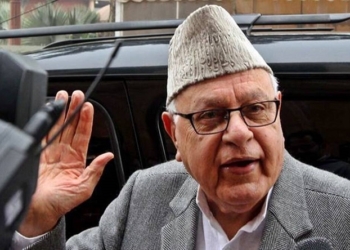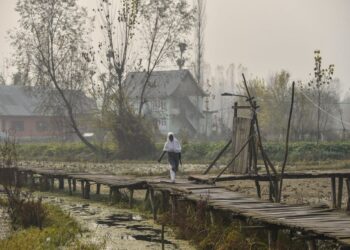
The report has come at a time when the government is investing in the model of education through digital mode that holds promise of being accessible to everyone.
DESPITE efforts afoot to digitalize civic affairs and governance structure in Jammu Kashmir, the region’s “slow progress” in the digital education—gaining momentum in the mainland—has prompted a new report to suggest some boost measures.
As per the latest Unified District Information System for Education (UDISE) report, only 32.6 per cent of schools in J&K had functional computer facilities in the academic year of 2021-22.
The UDISE data has also shown stark difference in availability of computer and internet facilities in government as compared to private schools in J&K.
This disparity has probably affected the kind of digital education options available to government schools during the pandemic.
Only 21.9 per cent of government schools had a functional computer facility which has largely dragged down the JK’s average.
At the same time, the government-aided schools have registered 100 per cent functional computer facility, while the private-unaided schools have shown 77.1 per cent progress in JK.
When compared with the national average of government-aided (67.5 per cent) and private schools (71.9 per cent), JK did much better.
The region has even surpassed several states including Assam, Bihar, Madhya Pradesh in terms of functional computer facility in government-aided and private schools.
In the case of internet facilities at schools, only 29.7 per cent of schools in JK provide it.
100 per cent government-aided schools and 62.5 per cent private-unaided schools provide internet facility, but only 22.3 per cent government schools had the facility, which is even worse than the national average (24.2 per cent), the data revealed.
Pertinently, the data has come at a time when the government is investing in the model of education through digital mode that holds promise of being accessible to everyone, affordable, and can overcome the shortage of quality education.
Further, only 22 per cent of schools in JK have functional desktops/PCs.
Even though 53 per cent of private schools have functional desktops/PCs, only 14.5 per cent of government schools have such facilities in J&K.
In comparison, 100 per cent government-aided schools have functional desktops.
Moreover, the data reveals that only 12.6 per cent of schools in JK have functional projectors.
“21.2 per cent of private schools have such facilities while only 10.6 per cent of government schools have such facilities,” it notes.
JK even lags behind in terms of schools with functional Smart Classrooms used for teaching with digital boards/ smart boards/ virtual classrooms/ smart TV availability.
Only 15.4 per cent of private schools and 6.4 per cent of government schools offer smart classrooms with digital boards, smart TVs, etc.
In comparison with the national average of 14.9 per cent, JK has only 8.1 per cent of smart classrooms.
The data further noted that only 7.2 per cent of JK schools have functional mobile phones used for teaching purposes, which is quite lower than the national average of 17.7 per cent.
Out of this, only 3.6 per cent of government schools and 22.5 per cent of private-unaided schools use this facility.
Follow this link to join our WhatsApp group: Join Now
Be Part of Quality Journalism |
Quality journalism takes a lot of time, money and hard work to produce and despite all the hardships we still do it. Our reporters and editors are working overtime in Kashmir and beyond to cover what you care about, break big stories, and expose injustices that can change lives. Today more people are reading Kashmir Observer than ever, but only a handful are paying while advertising revenues are falling fast. |
| ACT NOW |
| MONTHLY | Rs 100 | |
| YEARLY | Rs 1000 | |
| LIFETIME | Rs 10000 | |










